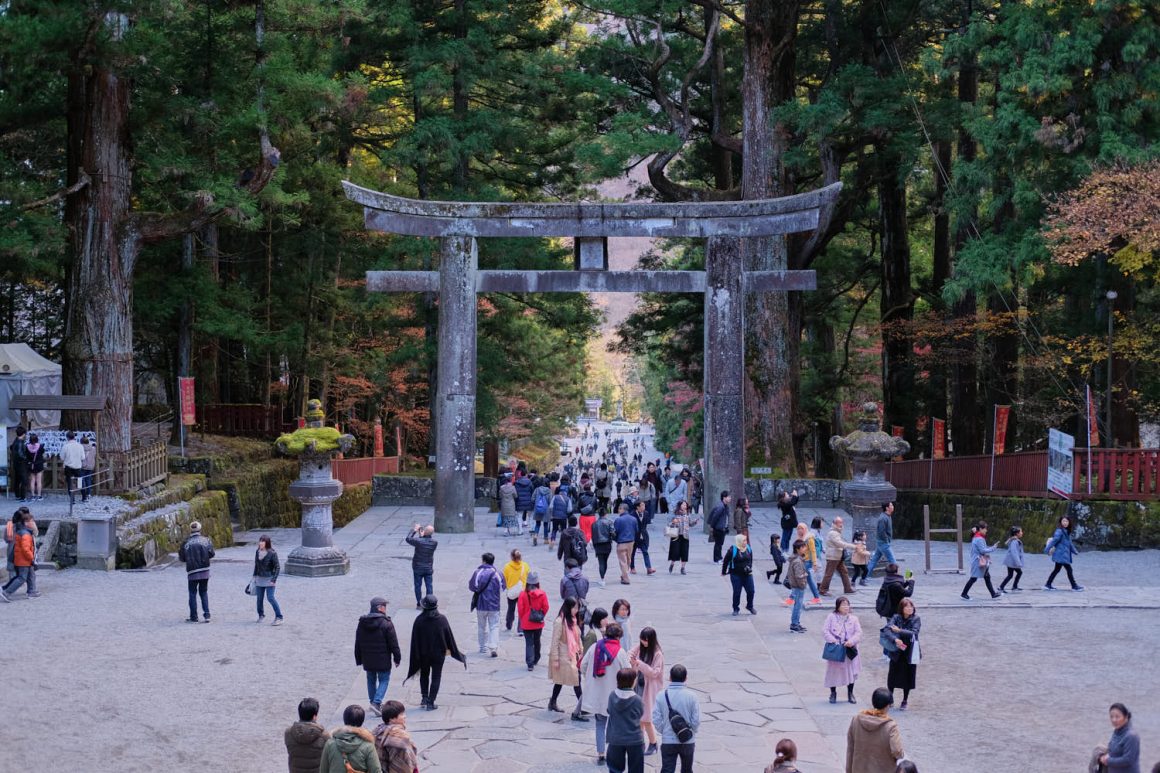Toshogu Shrine (東照宮, Tōshōgū) is Nikko’s most visited attraction. It is the resting place of Tokugawa Ieyasu, under whose leadership the Tokugawa shogunate rose to rule the country for a 250-year period until the Meiji Restoration in 1868. He is interred in Toshogu as the “Great Deity of the East Shining Light” (東照大権現, Tōshō Daigongen). Ieyasu died in 1616 and much of the buildings you see today were re-built 25 years after his death in 1636. The fifty-five buildings in the complex were completed in just over a year at a cost of ¥40 billion ($) in today’s money. It was designed with the natural lay of the land in mind. Stairs lead visitors from one plateau to another, and much of the complex is built at different levels. The shrine complex was registered as a World Heritage site in December 1999.
The paid area begins at the front gate. Before that, there is a wide, gravel opening in the forest with the Gojumoto (Five-Story Pagoda) towards the south. This was built in 1648, but was destroyed by fire in 1815 and rebuilt three years later. It is designated as an Important Cultural Property.

Once through the front gate of the shrine, visitors will enter into a courtyard area which contains the Sanjinko (“Three Sacred Storehouses”). These structures are of particular note for their ornate carvings of the “Imaginary Elephants”, so called because the artist had never seen an elephant before and so carved them based on his own imagination. Harnesses and costumes used in the Procession of 1,000 Samurai (part of the processions helds in the spring and autumn) are stored in these buildings. Nearby visitors will also see the Shinkyusha (Sacred Stable) and the “See No Evil, Speak No Evil, Hear No Evil” carving of three wise monkeys (Sanzaru) is definitely something not to miss.

One the other side of the courtyard area, is the water Omizuya where visitors can purify themselves before entering the main area of the shrine, as well as an area for photographs and the purchase of amulets. Turn right and you will see stairs leading up to the Yomeimon Gate—one of Japan’s most grandiose and famous gates, and probably the most photographed of all the structures.. It is adorned with ornate carvings and as is also known as the “Gate of the Setting Sun” because visitors can never tire of its gaze.
The right and left of Yomeimon Gate is the Kairo (corridor)—flower and bird carvings on the walls on the exterior walls of two others structures, created from a single panel in vivid colours. This is a designation National Treasure. From the opening after Yomeimon Gate visitors can also see the Gohonsha (the main shrine), which consists of the Honden (main hall), Ishinoma (stone chamber), and Haiden (worship hall).

The tomb of Tokugawa Ieyasu is to the right of Yomeimon Gate up a few hundred stones steps through the surrounding forest. The tomb itself is rather understated in comparison to the other structures.
The Nikko Toshogu Museum opened in 2015 to commemorate the 400 year anniversary of Tokugawa Ieyasu’s death. It contains personal artifacts, including armor, swords, and writing instruments owned by the shogun. It is located outside the shrine’s grounds, a few minutes walk to the south.





